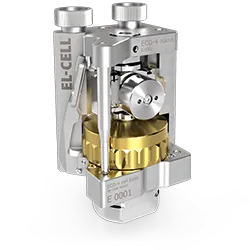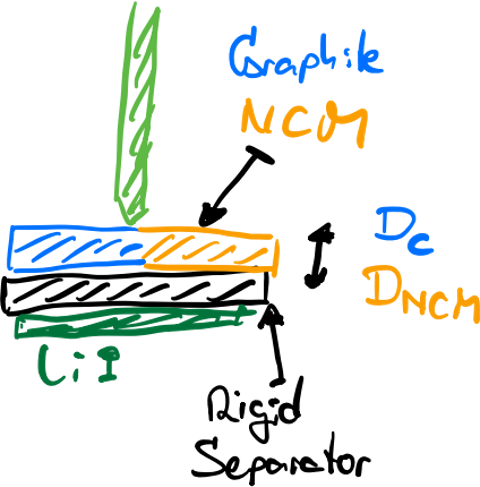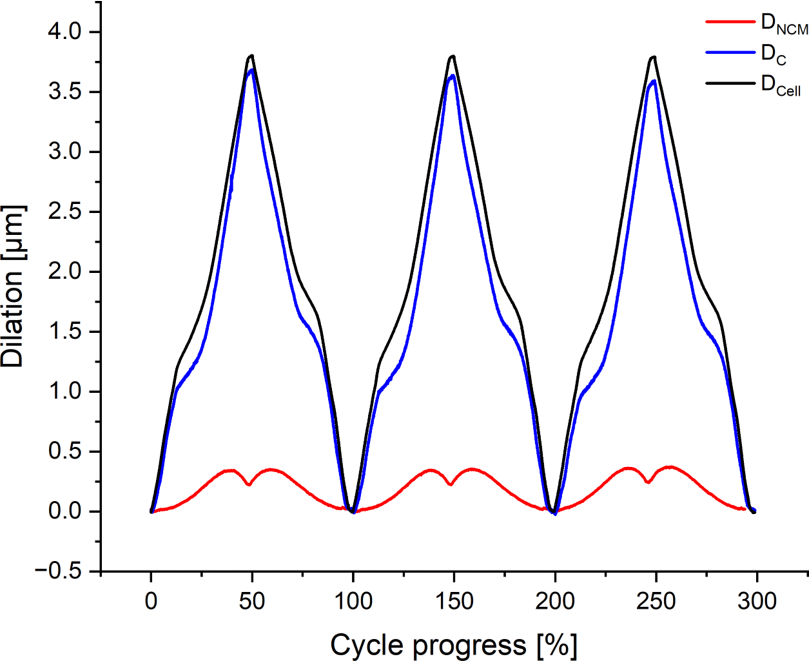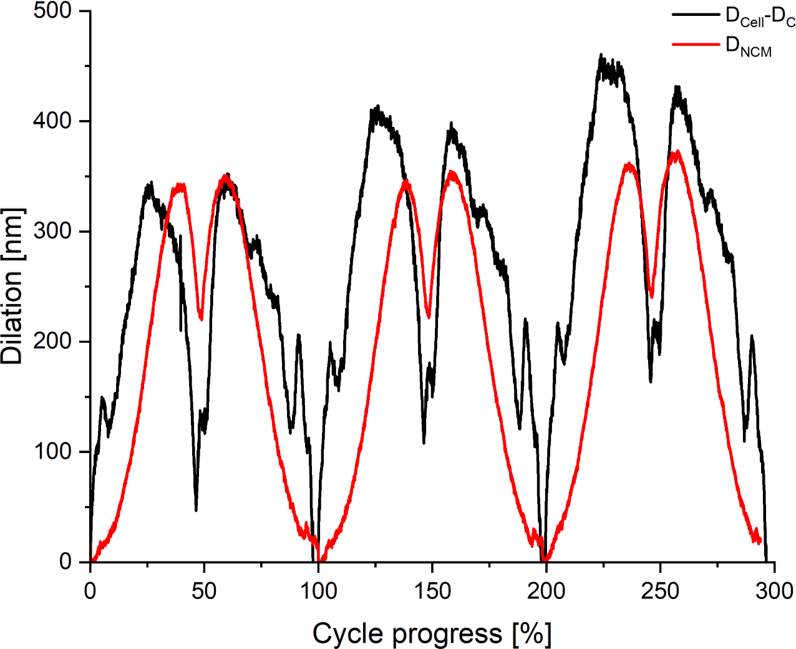In this work, we present a comparative study on the dilation of standard battery active materials: NCM (111) and graphite. We obtained the half-cell dilations of both electrodes by using the ECD-4-Nano electrochemical dilatometer. Additionally, we measured the full cell dilation of a cell built with both materials mentioned above and a rigid, technical separator.
To analyze the data, we subtracted the swelling amplitude of the graphite half-cell from the full cell swelling amplitude and compared the result with the directly measured half-cell dilation of NCM (111). The result clearly shows that the complex „double peak“ dilation characteristic of NCM (111) can be reproduced qualitatively and quantitatively from combining the graphite half-cell dilation with the full cell swelling.
Approach
Utilizing the ECD-4-Nano in the half-cell setup, the single-electrode dilations of both NCM (111), DNCM, and graphite, DC were obtained. To mechanically separate the working electrodes from the counter electrode (Li), a glass frit was used as a rigid separator (1).
Thereafter, the full-cell dilation, DCell, was measured using the ECD-4-Nano in full-cell mode. A technical separator was used for its incompressibility (2).
The cells were cycled in a CC / CV program with a charge rate of C / 10. The resulting dilation curves were processed as follows: First, a baseline was subtracted to correct for offset and possible signal drift. Additionally, the cycle times were normalized to enable direct comparison of the dilation signals. Lastly, the swelling curve of the graphite half-cell DC was subtracted from the full cell swelling curve DCell to reproduce the NCM half-cell swelling DNCM.
Results
All three dilation curves are depicted in image 3. Shown are three cycles. It can be seen that DCell has a single peak at 3.8 µm and DC a single peak at 3.6 µm, whereas DNCM shows a double peak (0.3 µm) with a central dip (0.2 µm).
The conclusion is that DC contributes approximately 95 % of the magnitude of DCell and is thus strongly dominating the full cell swelling.
In the last image, the difference between DCell and DC is shown (black) and compared with DNCM (red). It can be seen that DNCM can, within
limitations, can be reproduced from the other two dilation measurements, DCell and DC.
This is remarkable since DNCM contributes only approximately 5 % to the magnitude of the full cell dilation, DCell.
Conclusion
We show here that the dilation of a full battery cell can be reproduced by combining the two half-cell dilations, even if the contributions of both half cells to the full cell swelling are highly asymmetrical. This has been proven by subtracting the high contribution half-cell swelling from the full cell dilation and thereby recreating the dilation curve of the low contribution electrode. Key to this work was the utilization of a high-sensitivity, high-resolution dilatometer, which allows reliable swelling measurements in the sub-micron regime.
Related products:
 ECD-4-nano electrochemical dilatometer
ECD-4-nano electrochemical dilatometer
Advanced Electrochemical Dilatometer for the measurement of electrode expansion with nanometer resolution.
- Capacitive displacement sensor (range 250 μm, resolution better than 5 nm)
- Additional gas pressure (0 to 3 bar) and temperature sensor (-20 to 80° C)
- Cableless connection via PAT socket, with electronic cell tag (PAT-Button)







Comments are closed.